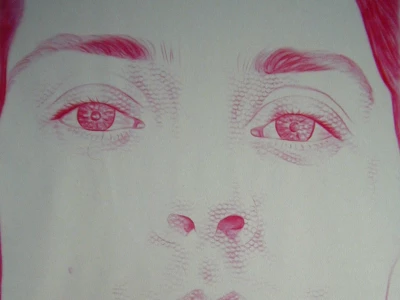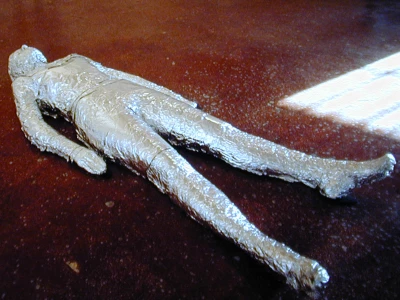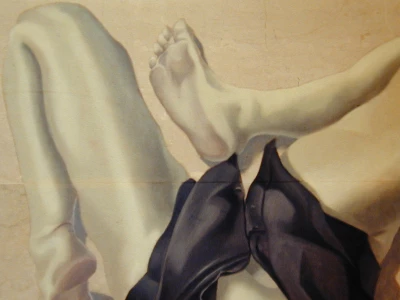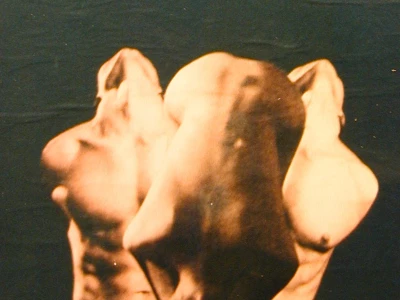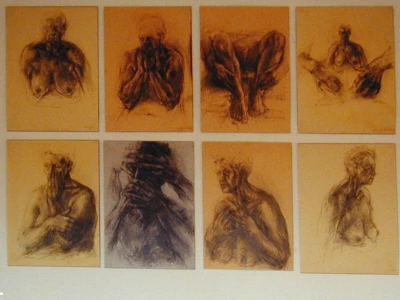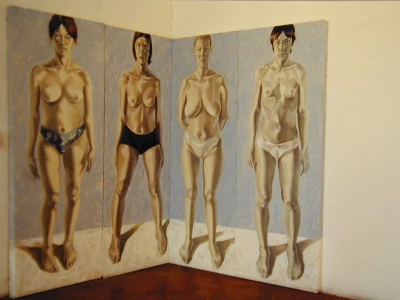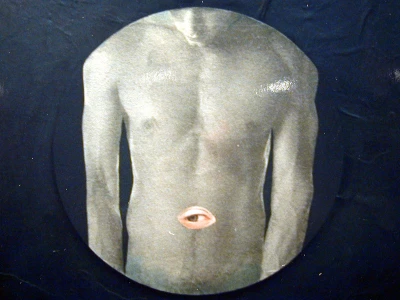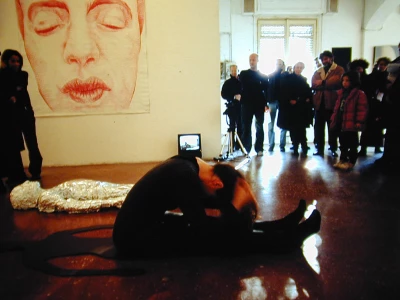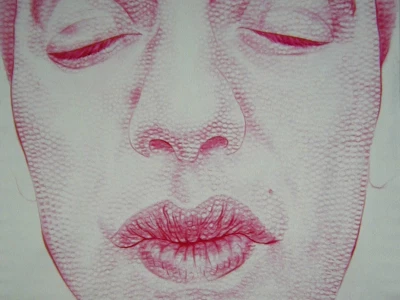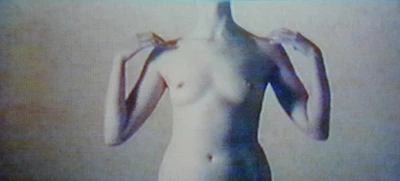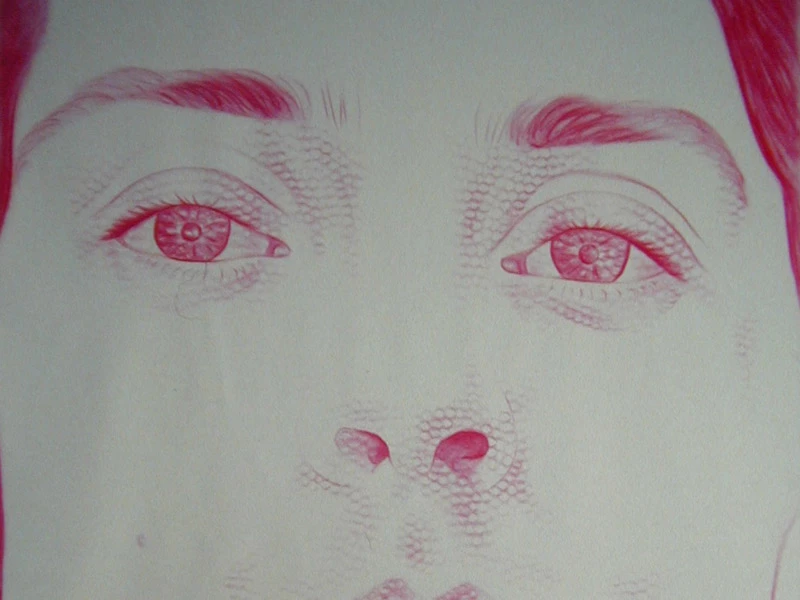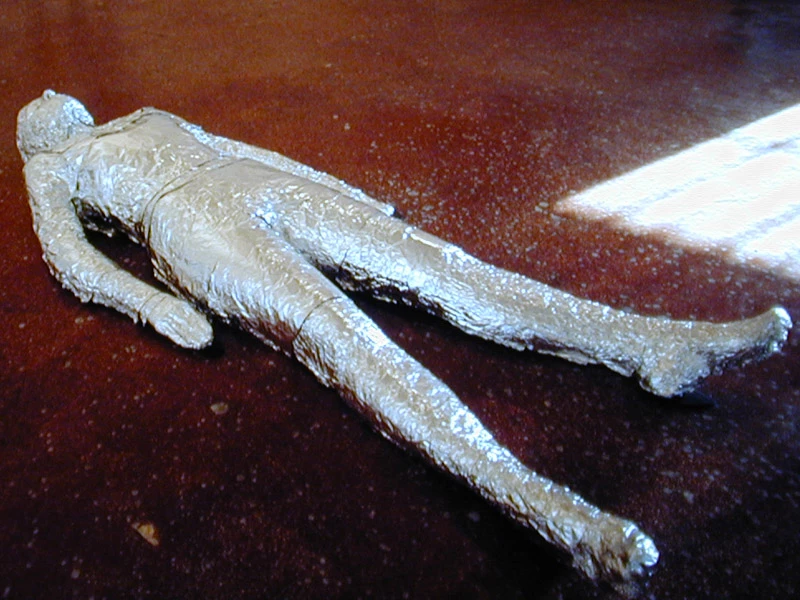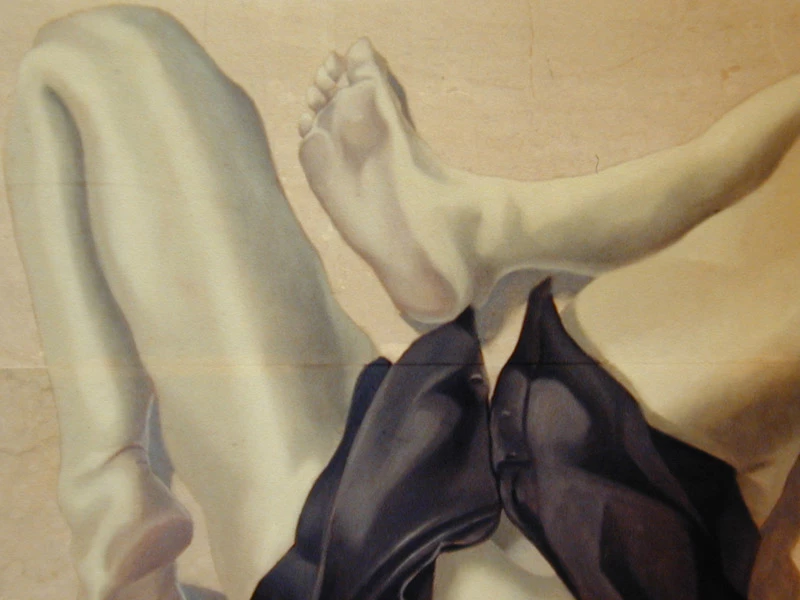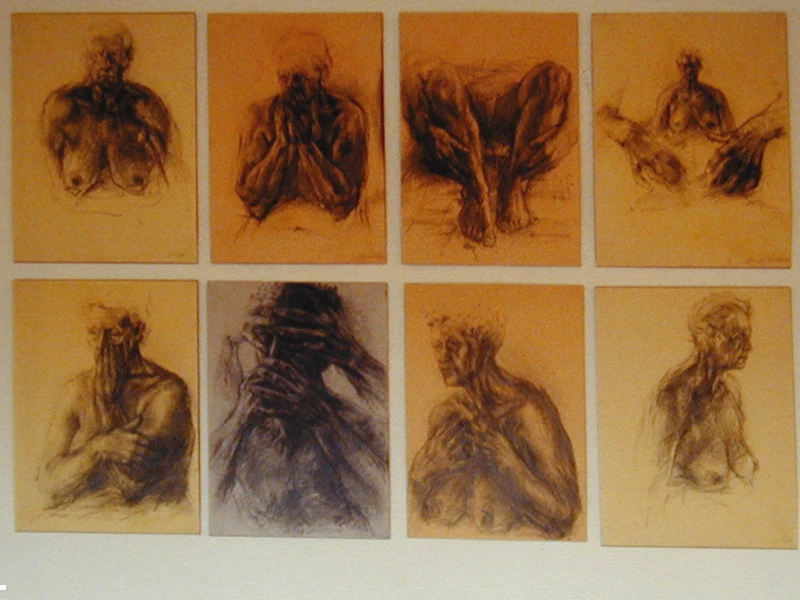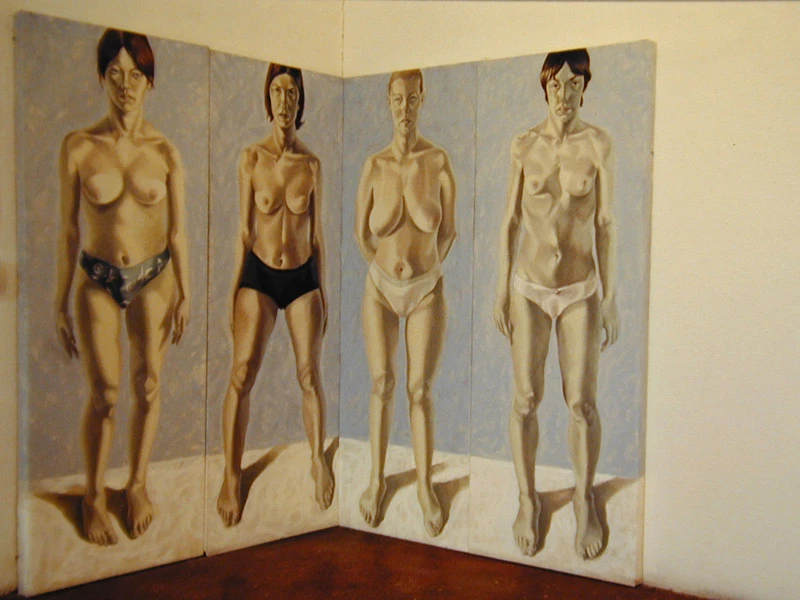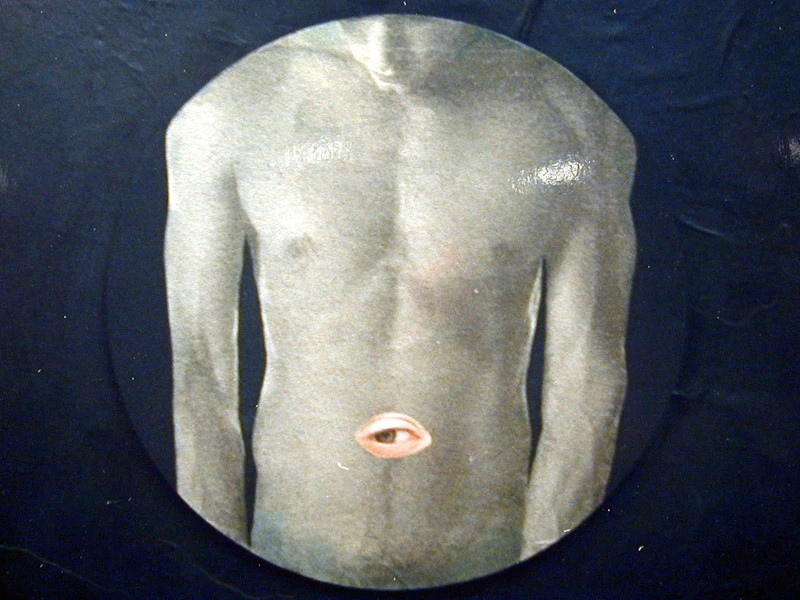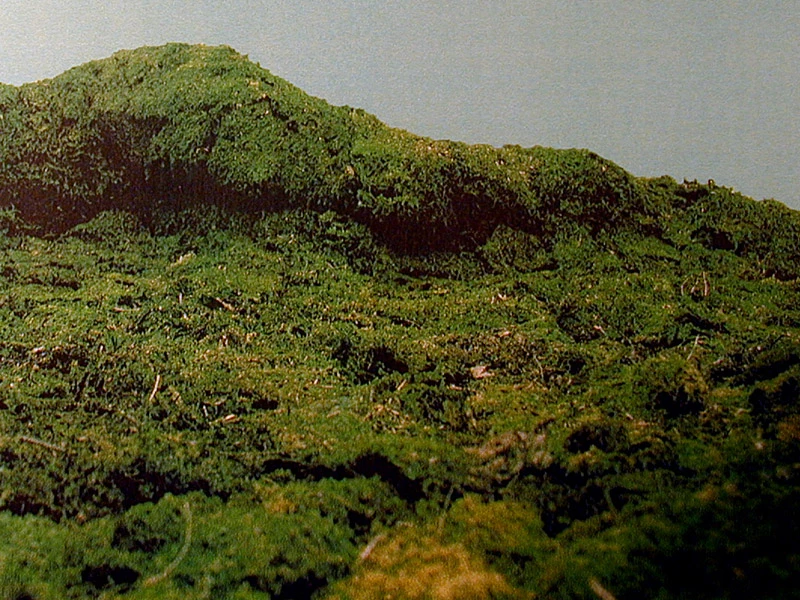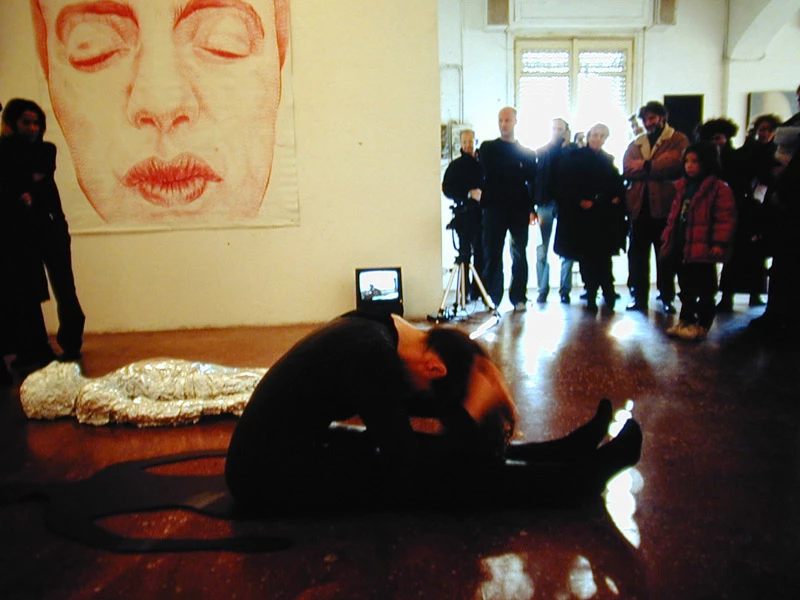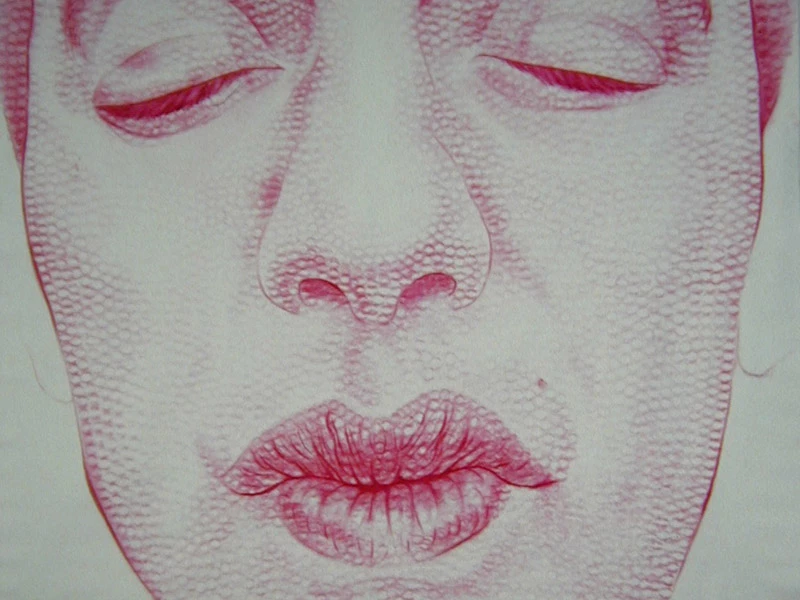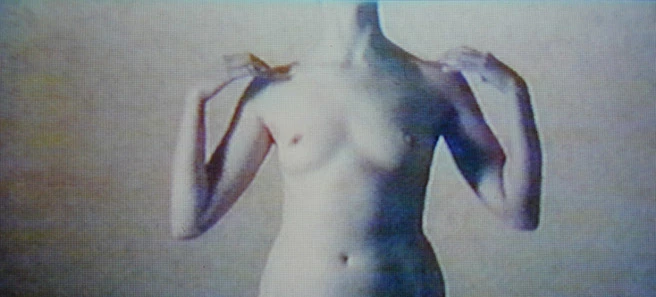Il corpo della pittura
Curated by Donatella Melini
Video documentation with Elizabeth Aro, Domenico Bulfaro, Marta Dell’Angelo, Antonia Fontana, Alina Gavrielatos, Elena Mutinelli, Zita Noè, Giancarlo Varotto
13.12.1998 - 20.01.1999
In our historical moment, there emerges a clear need to rediscover the body—even in a figurative sense. Just think of how the presence of “flesh,” in quantity, is a fundamental audience draw in television programming. Without pausing for unnecessary judgment, this can be seen as indicative of a deeper need: that of reclaiming possession of and familiarity with our bodies.
This form of possession seeks to be clean and free from the rigidity and dangers of “education,” and evidently longs to present itself as a soft presence—tactile, natural, ironic, and playful. Much like when friends show each other their favorite clothes. And that’s exactly what Spanish artist Elisabeth Aro offers us in her video Mirando tu vestido.
Personally, I sometimes experience a deep state of concentration—otherwise rare. A kind of ecstasy. A subtle, soft pleasure that dissolves all forms of self-consciousness. I love the dress as I love my body, and I love showing them. There’s no problem anymore—it’s just my body. How does it look on me?
What I want in the privacy of my own room is certainly not the bitter portrait of some relative. I want a poster of Marcus (you know, the Swedish model), shirtless, maybe with his pants hanging just slightly low—just a bit. “Flesh” is no longer a provocation but something light, fun, and, above all, beautiful. Just like the work of Giancarlo Varotto, which remains firmly rooted in the tradition of good classical painting. His technical skill is, in fact, extraordinary. But such mastery serves as a tool for a line of inquiry integrated with contemporary themes. Lightness, for example. The nude in Varotto’s paintings is an ostentation of beauty—abundant beauty. But it’s innocent and cold, the way it might be in a magazine, certainly not intellectualized or weighed down.
A slightly different approach is found in the work of Elena Mutinelli and Alina Gavrielatos, who use classical techniques like charcoal and oil on canvas as well as humble materials to depict characters close to them—of course with different concerns—while trying to place them in a context that “illustrates” them. Mutinelli’s drawings are preparatory sketches aimed at quickly capturing a quid that will determine the final sculptural work. Alina, a professional illustrator, focuses more intently on exuberant color research with a Matisse-like flair in her canvases.
Then there’s lightness and irony in the work of Bulfaro, who presents TWO gigantic portraits of ONE kiss. Impossible? Absolutely not. We don’t often think about it, but even if two people kiss, the kiss itself is just one. These enormous lipstick-covered canvases—lipstick being an essential tool to “recognize” a kiss—are someone. They are The Kiss, made of kisses: the kisses of Domenico Bulfaro.
Perfectly plastic body fragments are what Zita Noè affixes to a stark black background. Precisely defined anatomical parts that, like icons, demand individuality. They demand not just to be presented, but rather to be represented, much like in the tradition of portraiture.
Marta Dell’Angelo from Brescia presents a stylistically refined study—in fact, we’re looking at excellent painting. Her approach is not only to present her body, but to propose it from her own point of view, allowing us to see what she herself sees of herself while denying us the possibility of occupying her place, of stepping onto her floor. With this artist, the atmosphere begins to cool. Not so much visual lightness anymore, but a more intimate, though not necessarily dramatic, inquiry.
The body as a means of creating a relationship with the environment. A medium that hides itself, covers itself, seeks a protective shell for a suspended state of action—perhaps an immediate vision, possibly lacking awareness and interaction from the viewer. It is through absence that Antonia Fontana “seduces” attention; “absence is not what opposes presence, but what seduces it” (Jean Baudrillard, Fatal Strategies). A presence that occupies the space, stirred by the artist’s energetic production.
